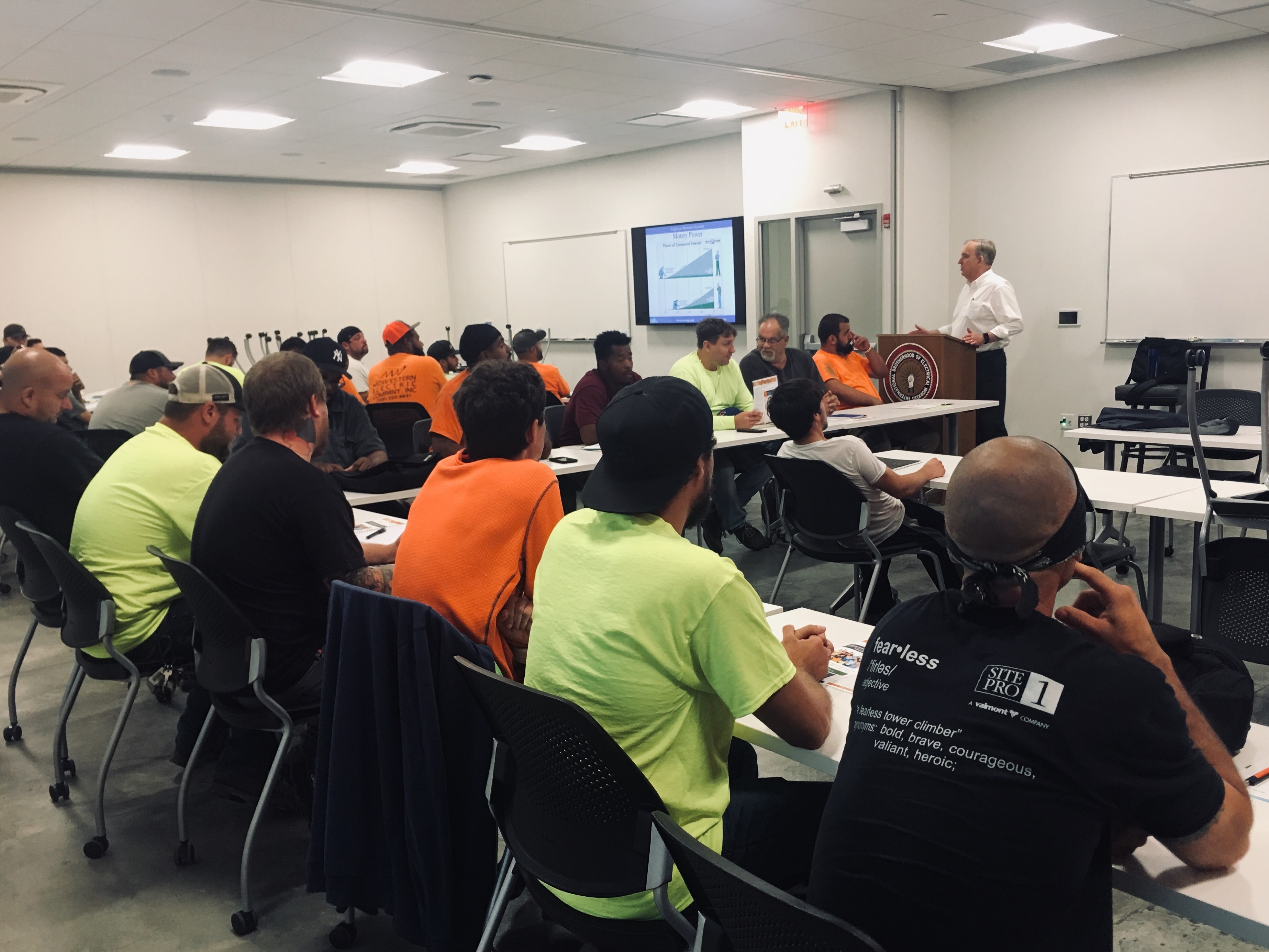Quick Links
First Year Courses
The first year courses are a mixture of classes, including principles of basic electricity, unionism, and “hands-on” classes.
The first emphasis is an eight week course on the principles of electricity which is a major basis for following classes. They learn how and what electricity is, including Ohm’s Law. They build, test and troubleshoot various circuits. They learn how to use a meter to test and troubleshoot. Also cycles, phases, transformers, etc. are introduced.
There are two classes outlining the benefits and the responsibilities of being a Union member. There is a strong emphasis on safety and an awareness of what safety issues a Local 9 member may encounter on the job, and how to deal with them properly.
There also is a series of 3 and 6 night courses that are very intense hands-on training of some common tasks the lineman may be expected to do on the job.
Unionism (UNS)
Course Description –
A short history of unions, especially the IBEW and Local 9, starts the class. The significance and importance of being a union member is the main topic. Also the rights, privileges and responsibilities of being union are discussed, along with what are and are not union issues on the job. Open forum for questions and dialogue is encouraged. Class is conducted by Local 9 Assistant Business Managers.
Basic Electricity (BEL)
Course Description –
This course starts with what electricity is, how it works, and sources of electricity.
Next the student learns Ohm’s Law and builds basic circuits on breadboards. They are introduced to meters and familiarized with their use. There is a major emphasis using the meter to build, test and troubleshoot various series, parallel and combination circuits, and their application out in the field. Problems are built into their circuits and the students must solve them with their meters.
The student is also introduced to magnetism, coils, transformers, single and three phase, the AC cycle, DC voltage and other basic electrical principles.
Besides taking quizzes most weeks, the student must pass a comprehensive written and practical exam to complete the class.
The material covered is the building block for many of the LTS classes, therefore a student MUST pass this course in order to continue the LTS program.
Member’s Assistance Program (MAP)
Course Description –
MAP is a contracted service provided to all Local 9 members and their immediate family who may need financial, legal, counseling, or other confidential help. A representative of Employee Resource Systems, Inc. is brought in to explain the services available, and how and when to contact them to obtain help.
Burning (BUR)
Course Description –
This class is a very hands-on oriented class in the technique of burning steel. An introductory video and demonstration of proper and safe set-up and handling of oxy-acetylene tanks, gauges and torches is first, including use of the proper protective clothing and equipment. After setting up the equipment and checking all settings, they then cut and burn holes in steel for the majority of 2 classes. The final class is a written and practical exam on burning.
Pipe Bending (PBD)
Course Description –
The student is first given an introduction to basic trigonometry and formulas used when bending conduit. Then they are introduced to some electrical code as it applies to conduit. The tools and basics of cutting and threading pipe and use of a knock-out set are explained, then there is hands-on bending of 90° bends, kicks, box offsets, four bend and other saddles. They practice with various hand, hydraulic and electrical benders. Bending plastic pipe is also shown. The final exam includes written and practical testing of bending conduit.
Print Reading (PTR)
Course Description –
Print Reading will introduce the apprentice to the fundamentals of interpreting construction drawings. Students will learn to interpret plan views, elevation views, sections, details, schedules, specifications and symbols. Plus abbreviations found on most streetlight and traffic intersection drawings.
Traffic A (Electro-Mechanical Controllers) (TRA)
Course Description –
This is the first class of comprehensive training in traffic signals and controls which covers 4 separate but progressive courses.
In this beginning course, the student learns the basics of typical traffic configurations, including how to read traffic pipe and cable prints. They go over connection and harness hook-up techniques. Also covered are terms, timing, electro-mechanical controllers, basic solid-state controllers, interrupters, transfer relays, timing, detection loops, conflict monitor, and other basic equipment used in traffic control.
Labor History (LBR)
Course Description –
Two professors from the University of Illinois Chicago’s School of Labor and Employee relations are brought in to teach this interactive class on labor history.
While the history of the union movement is discussed, the student becomes aware of the importance of the labor movement, what it means, and how unions impacted the workforce both yesterday and today. The fundamental rights, principals, and goals of the union movement are examined, as is the relationship between unions and politics.
Basic Rigging (RIG)
Course Description –
What a qualified rigger is per OSHA & ANSI definitions is the first topic after a short written pre-test showing the student’s general knowledge of the material. Next is the four basic rules of rigging. The types of synthetic web slings, wire rope slings, chains and shackles and how to identify defects, load rating, company identifiers and color coding are discussed using the actual equipment on hand. A hand out is issued, and the students are taught how to determine proper sling load capabilities used in lifting by showing diagrams. The students are given a written final test.
Signaling (SIG)
Course Description –
This course as prescribed by new OSHA law addresses specific qualification requirements for the signal person of cranes and derricks in construction.
They are instructed in a basic understanding of equipment operation and limitations, and crane dynamics and boom deflection. Definitions applicable to signaling, power line safety, who and when a signal person is needed, the types of and the transmission of the signals are all taught. The students are given an opportunity to utilize these signaling skills by having one student using signals only have another student maneuver a fishing pole with weights from one location to another. They are given a written and practical test, and upon passing, are issued a Signal Person ID card as a certification of completion.
Overhead (OVH)
First the student is outfitted with belts and hooks, and introduced to proper climbing procedures, including the correct use of safety equipment. Throughout the rest of the course, the student is exposed to a combination of lecture, demonstration and hands-on application of all aspects of overhead construction.
They climb wood poles extensively while practicing the use of rigging knots, hand lines, and chain hoists. They work together installing arms, U-guards, down-guys and span guys. The proper setting of wood poles and guy wires is also discussed. A comprehensive written exam is combined with climbing and tying knots for the final.
Fringe Benefits
Course Description-
This presentation will give you a sound introduction into the fringe benefits provided through the collective bargaining agreement between IBEW Local 9 and MSECA. The Fund Office staff will discuss each of the benefit plans, covering “need to know” items, frequently asked questions, and hot spots that trip up participants the most frequently.

